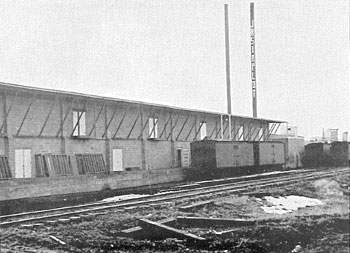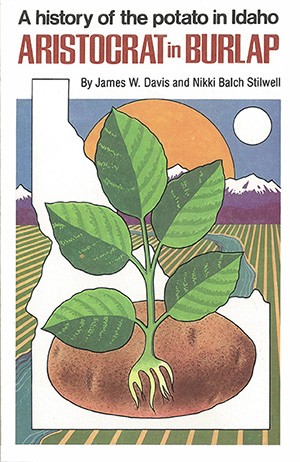 World War II dehydrated potatoes were shipped from this plant.
World War II dehydrated potatoes were shipped from this plant.
When it arrived, Jack Simplot assembled the machine and found it to be much more efficient than the handshaking method that had been used previously. In operation, the sorter was moved into the farmer's cellar, and the electrical cord was plugged into a light socket. Potatoes were dumped on a table by a conveyor and as the belt carried them along, the people working on either side of the table sorted out the number ones, the number twos, and the culls. The produce was then bagged and hauled to town, loaded in a railroad car and shipped.
The story continued that Jack Simplot sorted his own potatoes first, then those of Maggert, the partner in the operation. He then continued to sort potatoes for other growers, moving the machine and his crew from farm to farm. The sorting activity began to conflict with a business enterprise owned by one of Maggert's friends, so one spring day after a winter of sorting activity, Maggert found Jack and suggested that he close down the operation and get back to his farming. Jack had made commitments to several other growers to sort their potatoes and an argument ensued. The longer the discussion, the more obvious it became that the two were not going to agree, so finally one of them produced a silver dollar and they decided to let chance decide who would own the potato sorter. The coin was flipped, and Jack Simplot ended up as the sole owner of the machine that was the beginning of the J. R. Simplot Produce Company.
Once launched in the business of shipping Idaho® potatoes, Simplot saw the advantage of size. He began building and buying shipping warehouses and increasing his annual shipments of Idaho® fresh potatoes during the 1930s.
It was during this same period that the Idaho industry was acquiring sophistication, upgrading its equipment and gaining a reputation for quality with the new Russet Burbank variety. As the growing industry wrestled with marketing problems, the desire to gain a larger measure of control over the distribution of their product led Idaho potato industry leaders to form the Advertising Commission in 1937. This, along with the development of consumer packs, sizing, washing, a marketing order, and stricter controls over quality, moved the industry into a position of leadership in the potato world. Fresh shipping operations in the '30s in Idaho tended to be small units. With the advent of motor transportation, farm-to-market distances were less important and shipping operations in central locations became larger. Consolidation began to take place.


 World War II dehydrated potatoes were shipped from this plant.
World War II dehydrated potatoes were shipped from this plant.